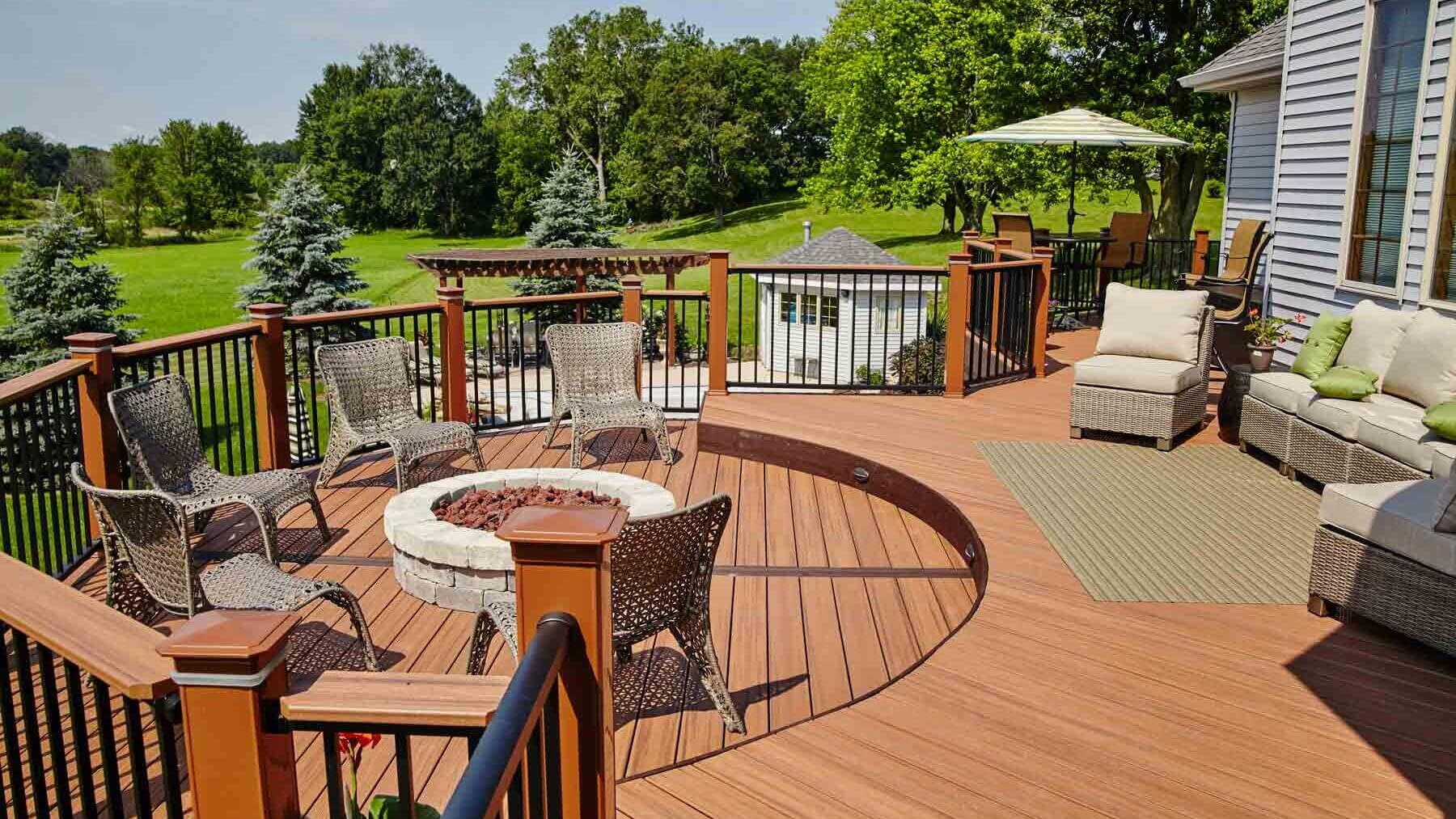Introduction
A well-designed deck can transform your outdoor space into a functional and aesthetically pleasing extension of your home. The right deck style not only complements your home’s architecture but also caters to your lifestyle and outdoor needs. Here’s a guide to help you choose the perfect deck design for your home.
We at PLJ are the leaders in carpentry services in Cape Cod, MA,and specialists in decking services.

Click here and get a free quote for your decking project with PLJ Carpentry
1. Understand Your Purpose
Before choosing a deck style, identify its primary purpose:
- Entertainment: A large, open deck with space for seating, dining, and a grill.
- Relaxation: A cozy deck with lounge chairs or a hammock for quiet moments.
- Outdoor Living: A multi-functional deck with zones for cooking, eating, and socializing.
- Aesthetic Appeal: A decorative deck to enhance your home’s curb appeal.
2. Match the Deck to Your Home’s Architecture
Choose a design that harmonizes with your home’s style:
- Modern Homes: Sleek, minimalist designs with clean lines, glass railings, and composite materials.
- Traditional Homes: Classic wood decks with ornate railings and neutral stains.
- Cape Cod Homes: Coastal-inspired decks with weathered finishes and nautical elements.
- Rustic Homes: Natural wood decks with rough-hewn finishes and integrated landscaping.
3. Explore Popular Deck Styles
Single-Level Deck
- Best For: Smaller yards or simple outdoor spaces.
- Features: One level, typically attached to the back of the house.
- Advantages: Cost-effective and easy to build.
Multi-Level Deck
- Best For: Homes on sloped terrain or those with expansive yards.
- Features: Multiple connected platforms at different heights.
- Advantages: Creates distinct zones for different activities.
Wraparound Deck
- Best For: Homes with expansive views or large outdoor areas.
- Features: Encircles the home, often accessible from multiple rooms.
- Advantages: Expands outdoor living space and improves accessibility.
Raised Deck
- Best For: Homes with elevated first floors or sloped yards.
- Features: Elevated platform with stairs and railings.
- Advantages: Maximizes outdoor space and provides storage underneath.
Attached Deck
- Best For: Homes with easy access to the yard.
- Features: Directly connected to the home, often near a kitchen or living room.
- Advantages: Seamless indoor-outdoor flow.
Detached Deck (Floating Deck)
- Best For: Homes with smaller yards or those seeking a freestanding structure.
- Features: Built on a separate area of the yard.
- Advantages: Flexible placement and no need for a house attachment.
Rooftop Deck
- Best For: Urban homes with limited yard space.
- Features: Located on a flat roof, offering panoramic views.
- Advantages: Maximizes unused space and adds a modern touch.
4. Choose the Right Materials
The material you choose will impact your deck’s durability, appearance, and maintenance needs:
- Wood: Timeless and natural, with options like cedar, redwood, or pressure-treated lumber. Requires regular maintenance.
- Composite: Durable and low-maintenance, mimicking the look of wood without frequent upkeep.
- PVC: Lightweight, weather-resistant, and available in various colors and textures.
- Metal: Ideal for modern designs; aluminum and steel are durable and sleek.
5. Incorporate Functional Features
Enhance your deck’s usability with these features:
- Built-In Seating: Benches or integrated lounge areas for convenience.
- Lighting: LED or solar lights for ambiance and safety.
- Pergolas and Awnings: Provide shade and define the space.
- Planters: Add greenery for a natural and inviting atmosphere.
- Outdoor Kitchens: Include grills, sinks, or counters for entertaining.
6. Consider Your Surroundings
Take your yard’s layout and environment into account:
- Views: Position the deck to maximize scenic vistas.
- Privacy: Add screens, trellises, or landscaping to shield the deck from neighbors.
- Access: Ensure easy access to the deck from your home and yard.
7. Plan for Maintenance
Choose a design and materials that align with your ability to maintain them:
- Low-Maintenance Options: Composite or PVC for minimal upkeep.
- Natural Look: Wood requires regular sealing or staining.
- Durability: Opt for weather-resistant materials to withstand harsh climates.
8. Work with a Professional Designer
For a custom deck that perfectly suits your home and lifestyle, consider hiring a professional. They can help you navigate building codes, materials, and design elements to bring your vision to life.
Conclusion
Your deck is an extension of your home and should reflect your style, needs, and surroundings. Whether you prefer a simple single-level deck or a multi-functional outdoor living space, the perfect design is one that enhances your home’s beauty and provides a space for creating memories.
Take the time to explore your options, and soon, you’ll have the ideal deck to enjoy for years to come.

